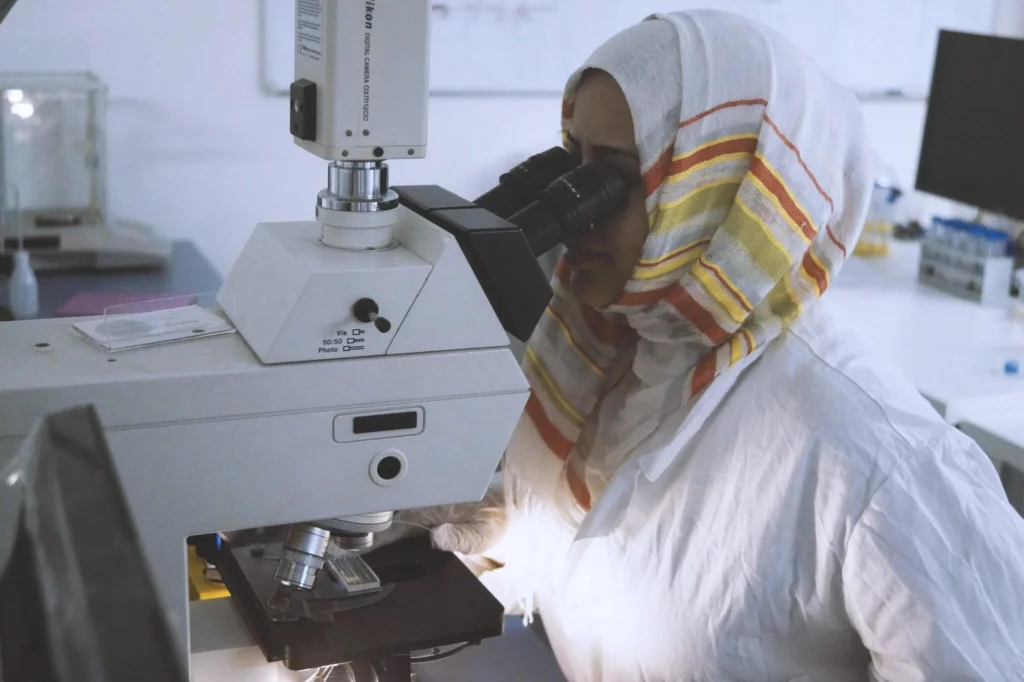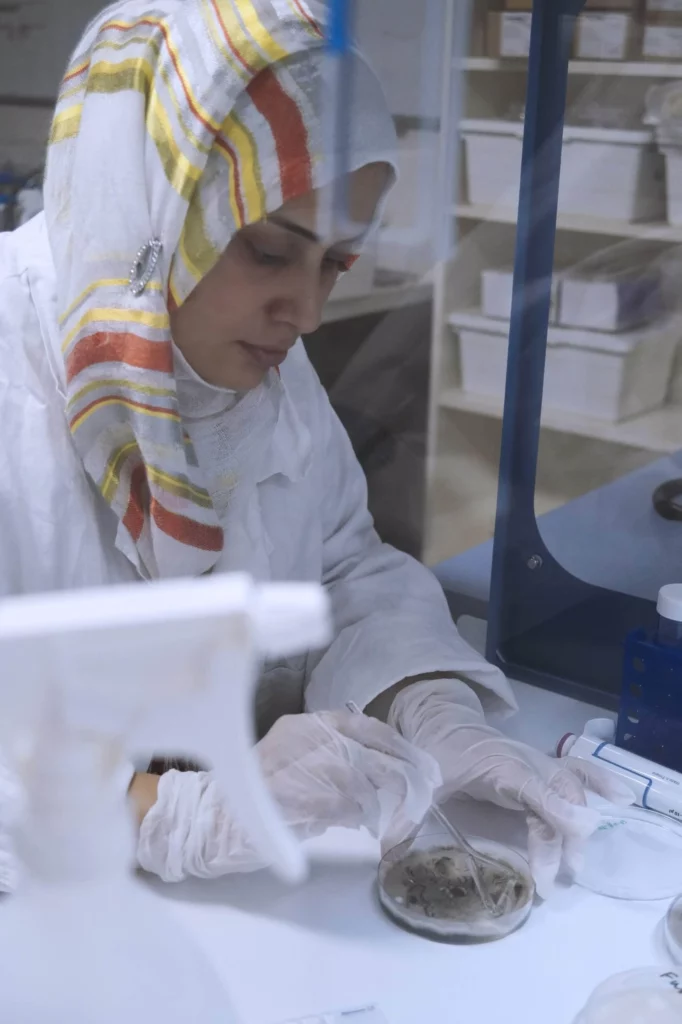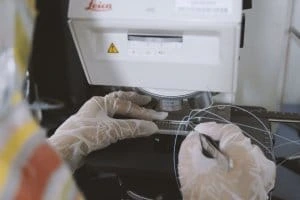Sehrish Iftikhar & fungicide screening
Publication Date
Keywords
droplet-microfluidics
food production
fungicide development and screening
spore dynamic behavior
plant pathology
Your microfluidic SME partner for Horizon Europe
We take care of microfluidic engineering, work on valorization and optimize the proposal with you
My microfluidic career – Fungicide screening
What can you achieve with microfluidics? What are the practical applications of microfluidics to a field of research, and how could microfluidics help your research career?
We asked our team for you. My Microfluidic Careers pages give you a realistic, no-frills idea of the wide variety of projects that can benefit from microfluidics.

Sehrish Iftikhar PhD worked on the MAHT-FunSST project, which has received funding from the European Union’s Horizon 2020 MSCA-IF under grant agreement No 843162.
What is the most interesting thing about your project?
My project is an amalgam of diverse fields spanning plant pathology, food production, mycology, fungicide screening, microfluidics, agriculture, and food security. Plant pathogenic fungi destroy a third of all food crops annually, causing economic loss and impacting global poverty. Managing plant diseases is essential for most crops to reduce their financial impact on yield and quality.
Several fungicides are sprayed to control these diseases, to increase the productivity of a crop, and to improve the storage life of harvested crops. Loss of fungicides through resistance is a problem that affects crop yield and food production. Conventional techniques to screen fungicides are time-consuming and laborious.
Considering the importance of standard high-throughput screening (HTS) methods for fungicide and antimicrobial sensitivity testing, my aim is to develop a microfluidic platform for large-scale, automated antifungal screening and sensitivity studies. One of the most interesting things about my project is seeing a single encapsulated spore of fungi grow inside a droplet and observing the dynamic behavior of many spores.
“One of the most interesting things about my project is to see the single encapsulated spore of fungi growing inside a droplet and observing the dynamic behavior of many spores.”
How did you transition from your previous research field to microfluidics?
I have been looking for solutions to perform rapid and high-throughput screening of fungicides. During my M.Sc. and Ph.D., I extensively worked with antifungal agents and fungicides. I know the huge amount of lab work required to screen antifungal agents, which is arduous and very time-consuming.
In July 2018, I received an email for the MSCA IF application and found the opportunity to start my project. Then, I started to look into the details and applications of microfluidics in Plant Pathology. Before that, I was unfamiliar with the field of microfluidics, but once I began to look into more information, it was super-interesting and fascinating in addition to its various advantages (low reagent consumption, manipulation of cell number and density, monitoring of a high spatial and temporal resolution). So, that is how I discovered microfluidics.
As I was already looking for screening methods for antimicrobial agents, this opportunity allowed me to develop new tools for screening that are more efficient, less time-consuming, and cost-effective.
Which task seems impossible without microfluidics?
Conventional screening methods are time-consuming. Considering the importance of antifungal screening, a microfluidic chip has the potential to yield a powerful tool for large-scale, rapid, and automated screening. I am trying to develop a novel lab-on-chip platform to allow fast screening of fungal pathogens, which can help control diseases and reduce food loss.
Miniaturization, automation, integration, high-throughput analysis, and replication in the same device are some of the factors that would be impossible without microfluidics in fungicide screening.
In addition, new insights into fungicide mode of action can be obtained by observing single conidia via enhanced dynamic control over the microenvironment, such as providing nutrients and growth factors. Integrating a simple, profoundly efficient, and high throughput lab-on-chip model is the key benefit of a device-based system compared to conventional protocols.

How does this project push back the current state of the art?
Fungicide and antimicrobial development and screening are stuck in an innovation gap. It incurs staggering expenses and takes many years to get a fungicide/antimicrobial to market. Presently, antifungal agents and fungicides are of paramount importance to ensure crop production. Loss of sensitivity to fungal pathogens and excessive spraying result in high costs and can cause more resistant pathogens to develop. Also, emerging fungal threats to plants challenge agriculture and ecosystem resilience.
Incorporating an innovative spore-based high throughput screening (HTS), platform will set a novel standard to customize the fungicide screening techniques currently missing from existing in vitro models. So, there is a dire need to screen already available fungicides and to identify new antifungal scaffolds, which requires long and laborious experimental work.
A microfluidic-based antifungal screening platform can allow reproducible and high throughput screening at a relatively lower cost. The device will minimize the cost of fungicide development and screening, thus reducing the economic burden in the EU and having large implications for improving food production globally.
Precisely defined manufacturing parameters will offer opportunities for scale-up and commercialization to meet larger-scale agricultural demand, opening the door to innovative pre- and in-field screening of fungicides.
“The device will minimize the cost of fungicide development and screening, thus reducing the economic burden in the EU as well as having large implications on improving the production of food globally.”
Do you already know what challenges in research you want to tackle next?
I have successfully encapsulated the single spore of the fungi, which is happily growing inside the droplet. I am also able to screen different concentrations of the fungicides.
The next challenge is automating the setup so users can “plug and play” with it. Also, I am considering achieving long-term incubation so that fungicide efficacy can be assessed throughout the spore’s sporesental process.
Although it sounds simple, imaging a large number of freely moving spores becomes a great technical challenge. The platform will result in reduced analysis time and switching from conventional bench-top to lab-on-a-chip for fungicide screening.

Curious about the MAHT-FunSST project and Sehrish’s work? Have a look at our project page and review about high throughput fungicide screening.